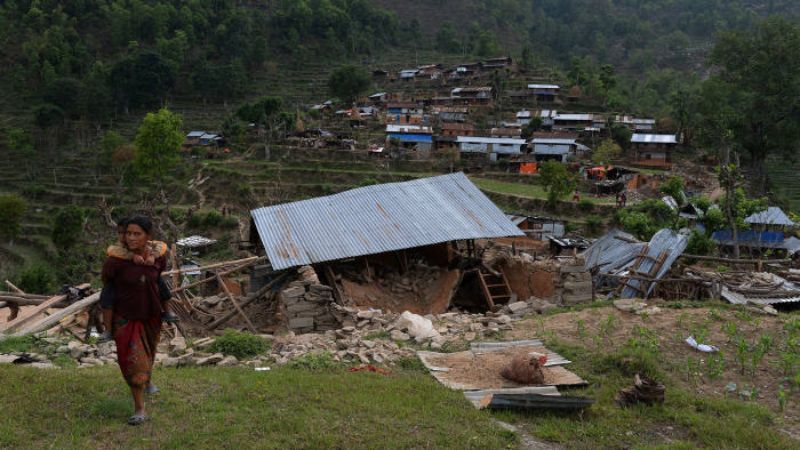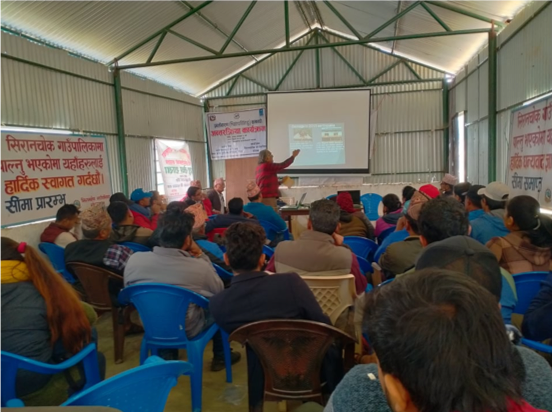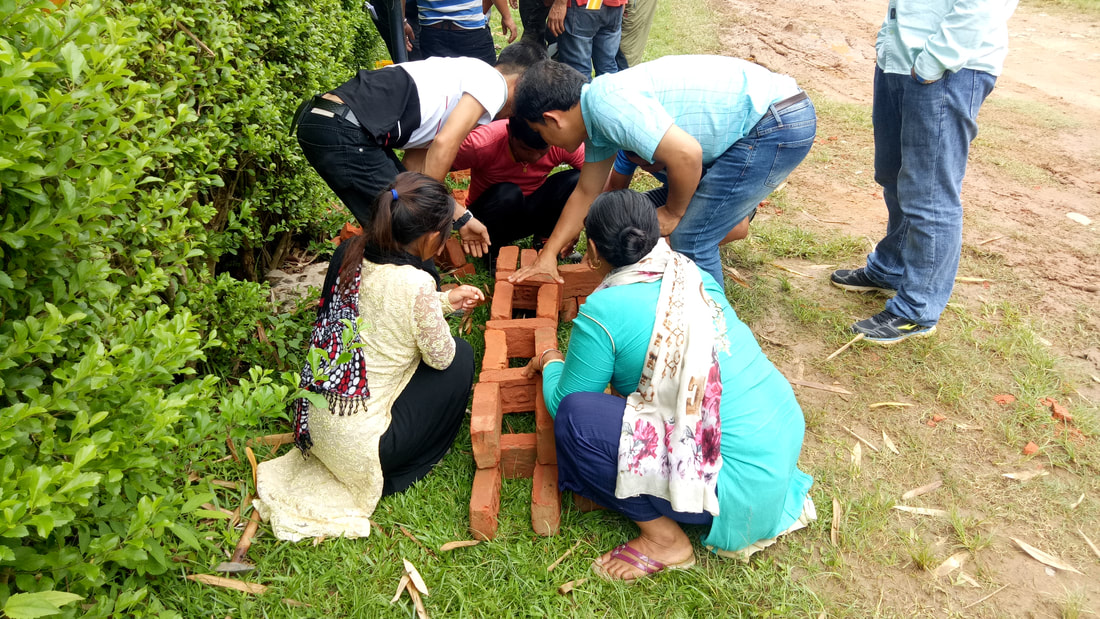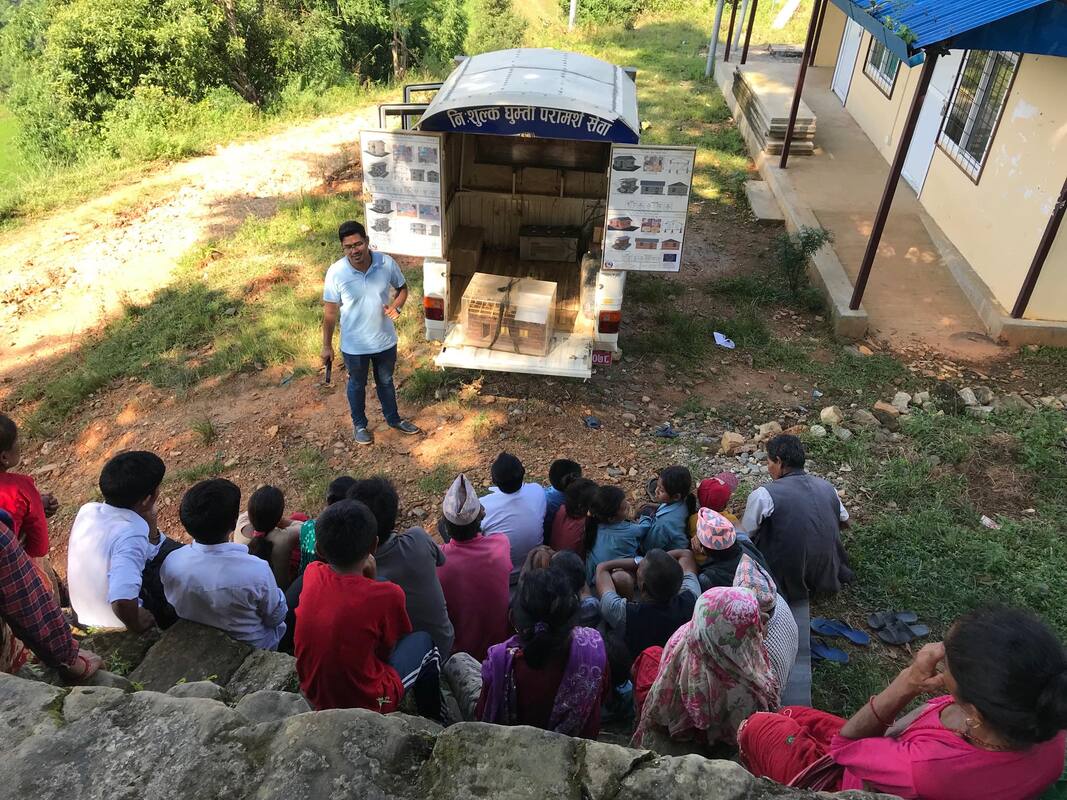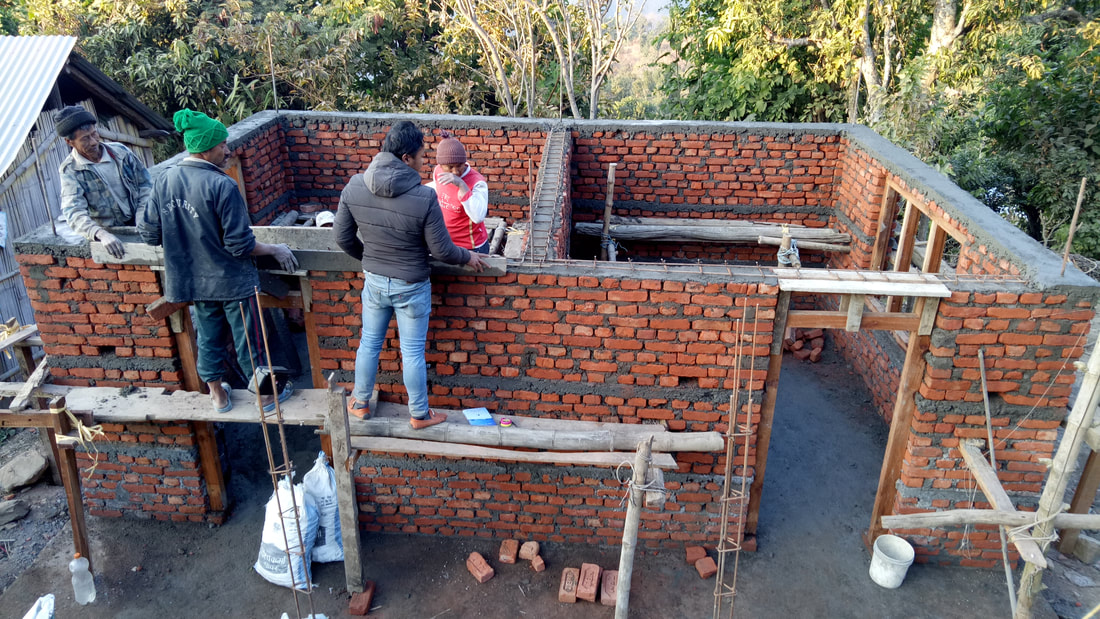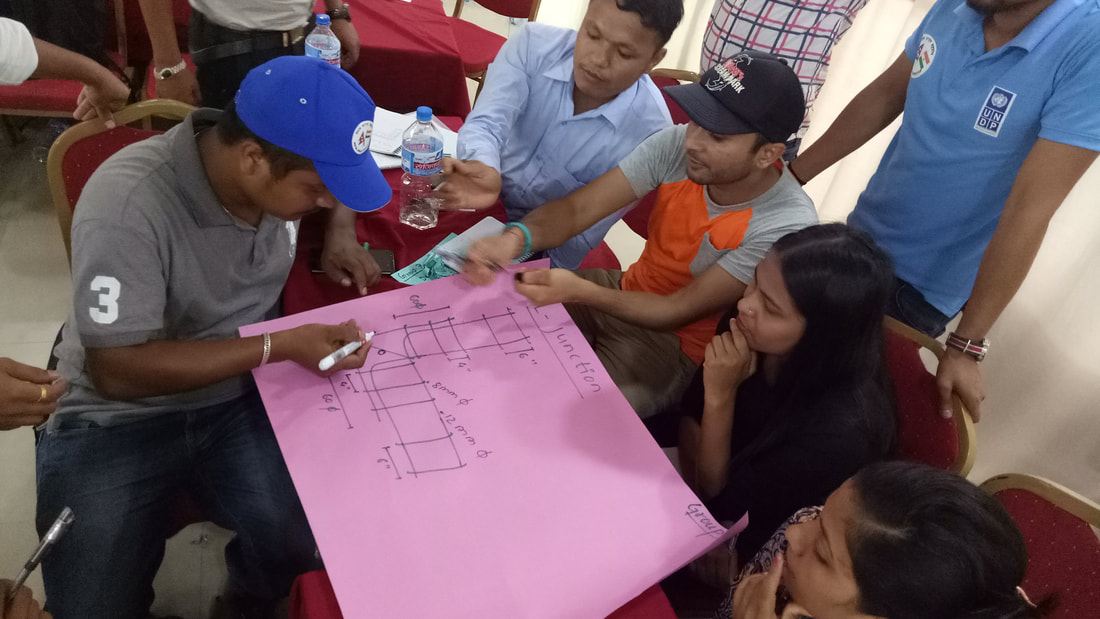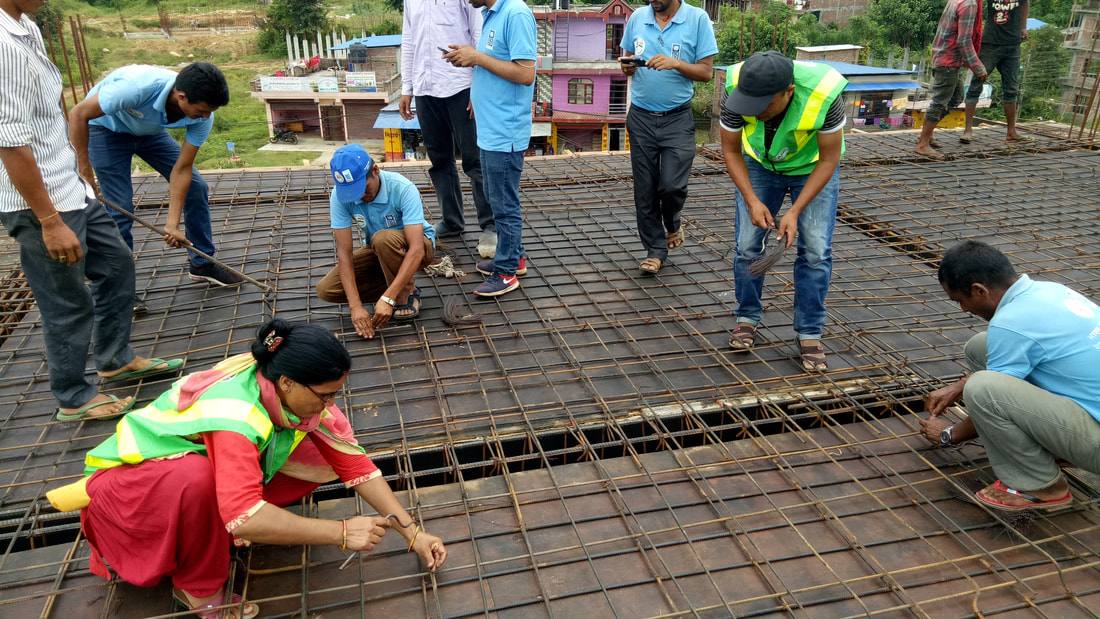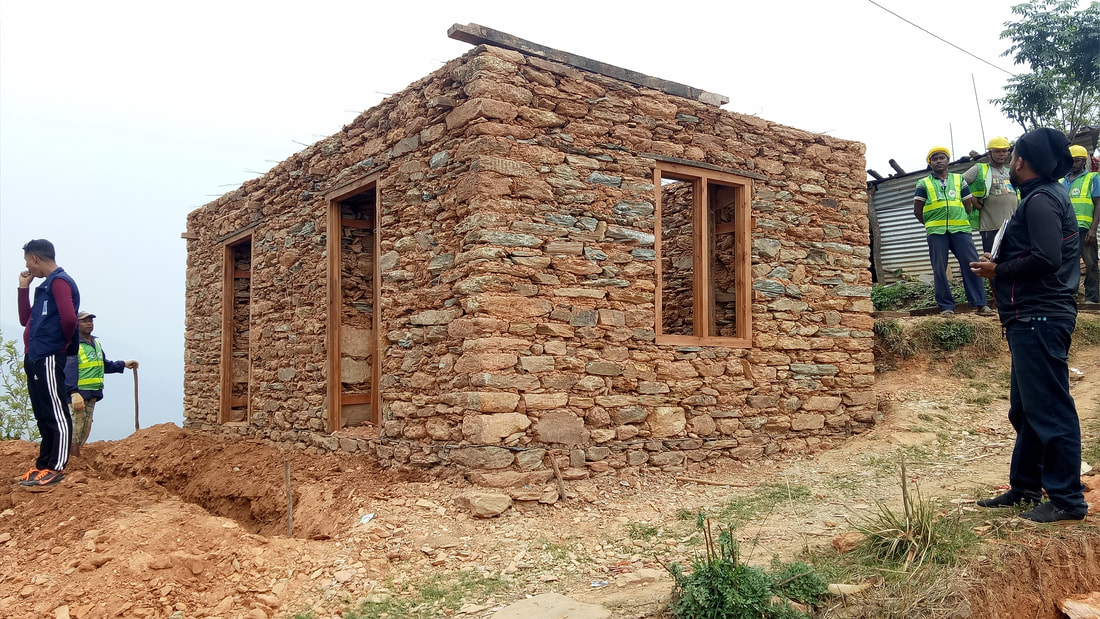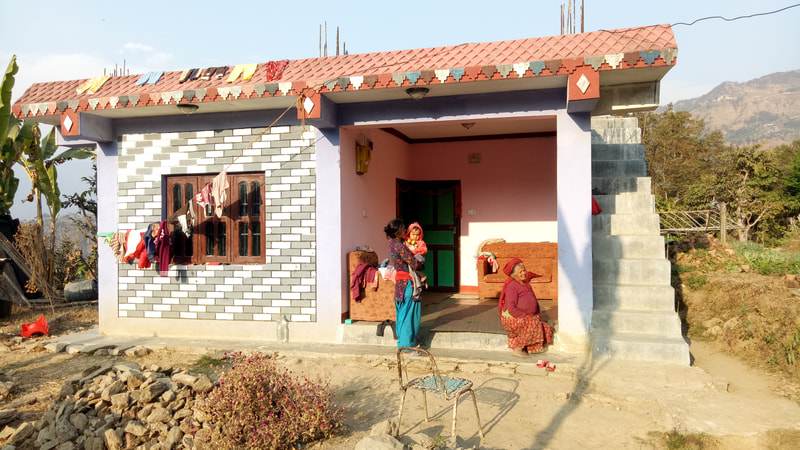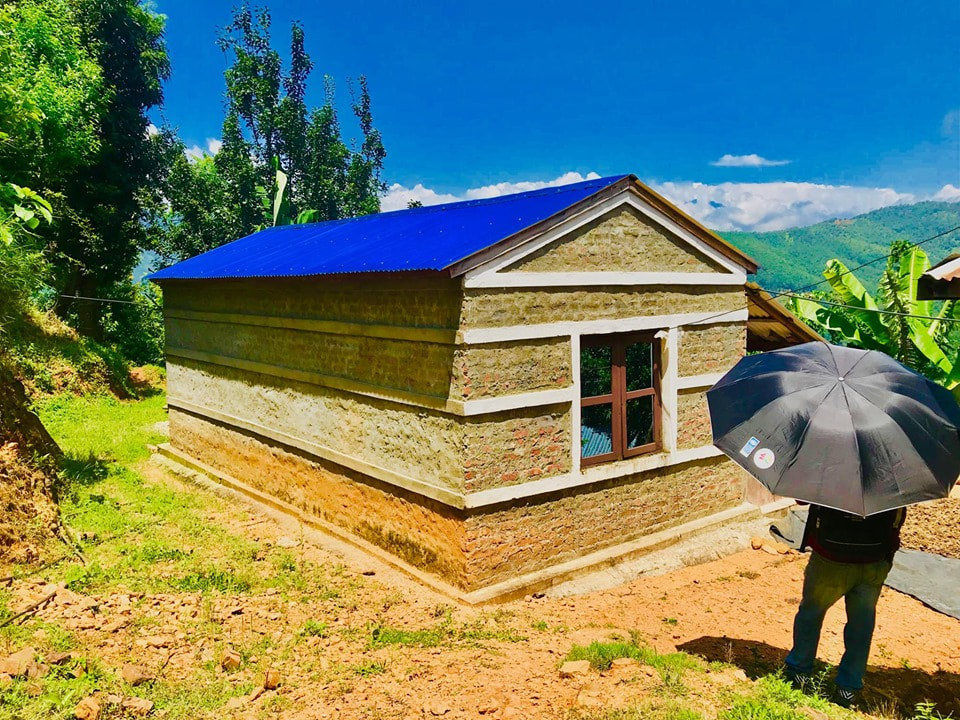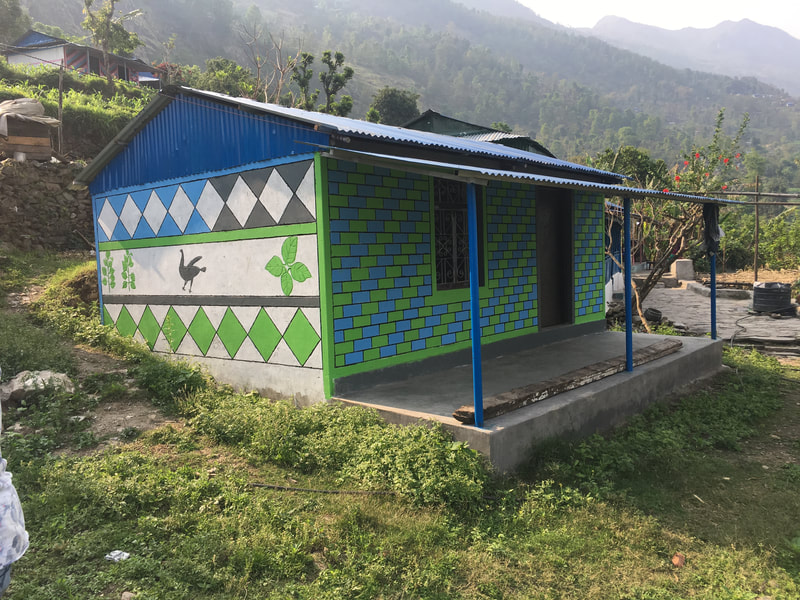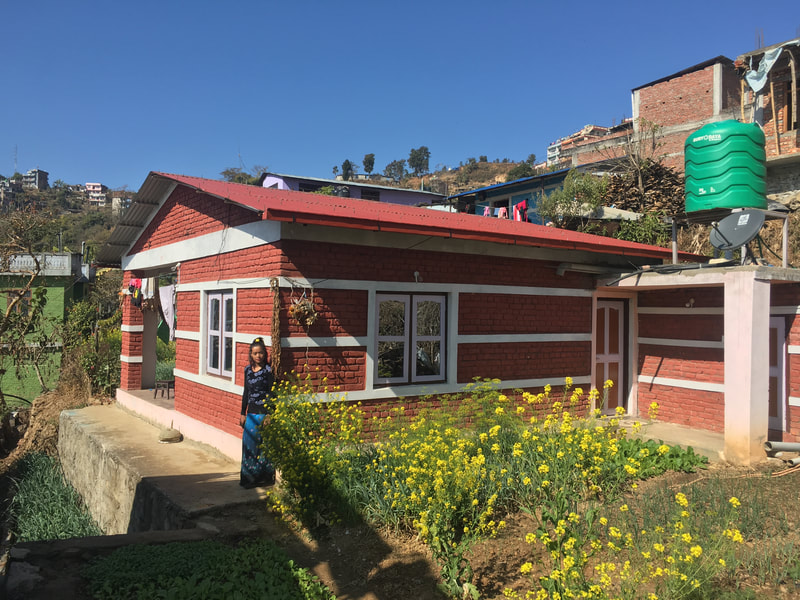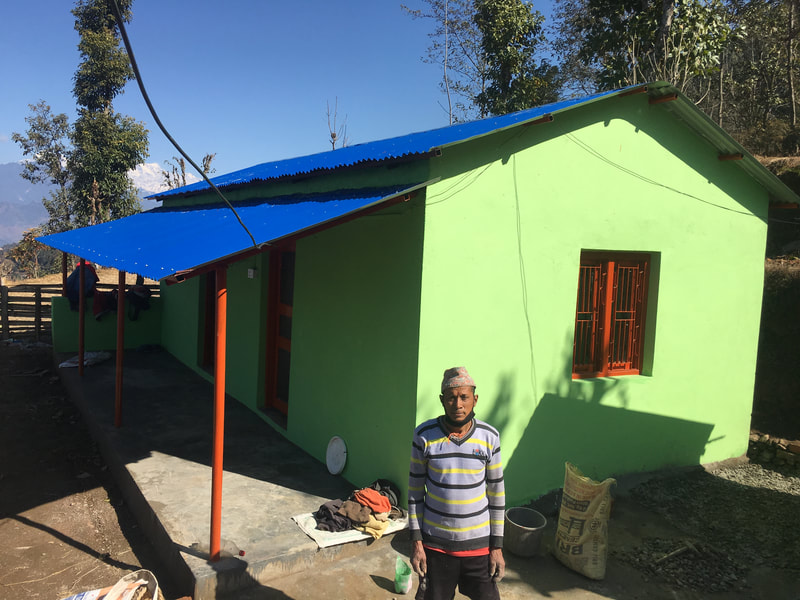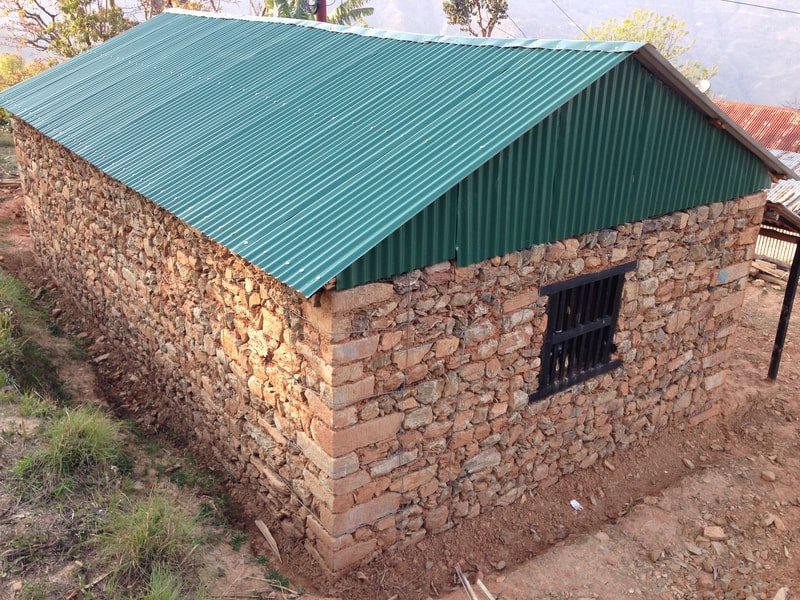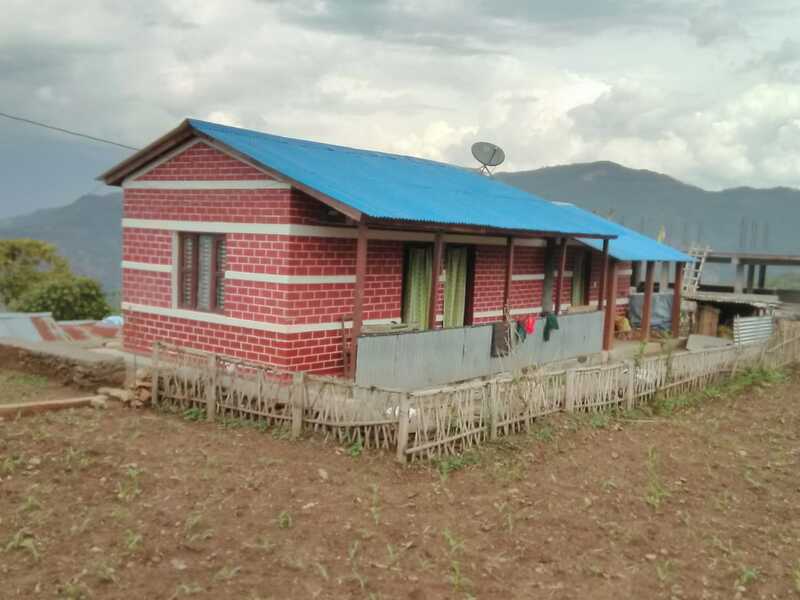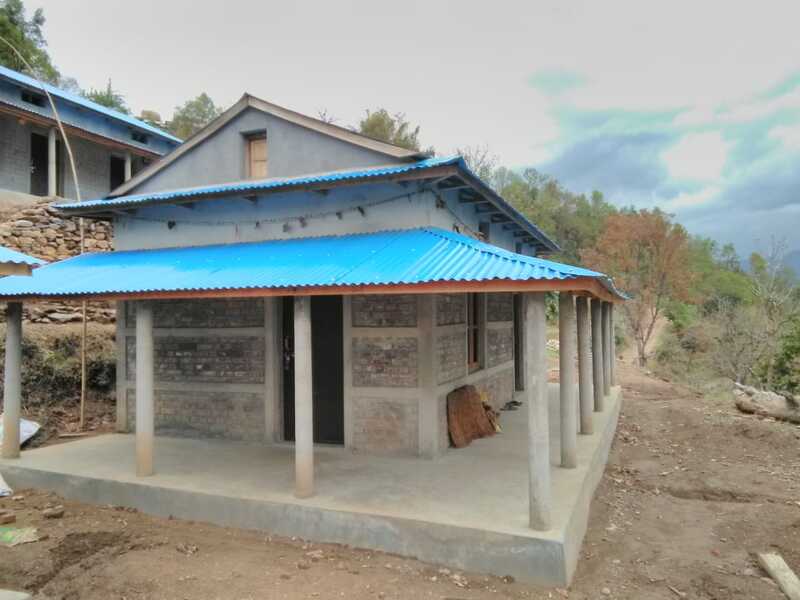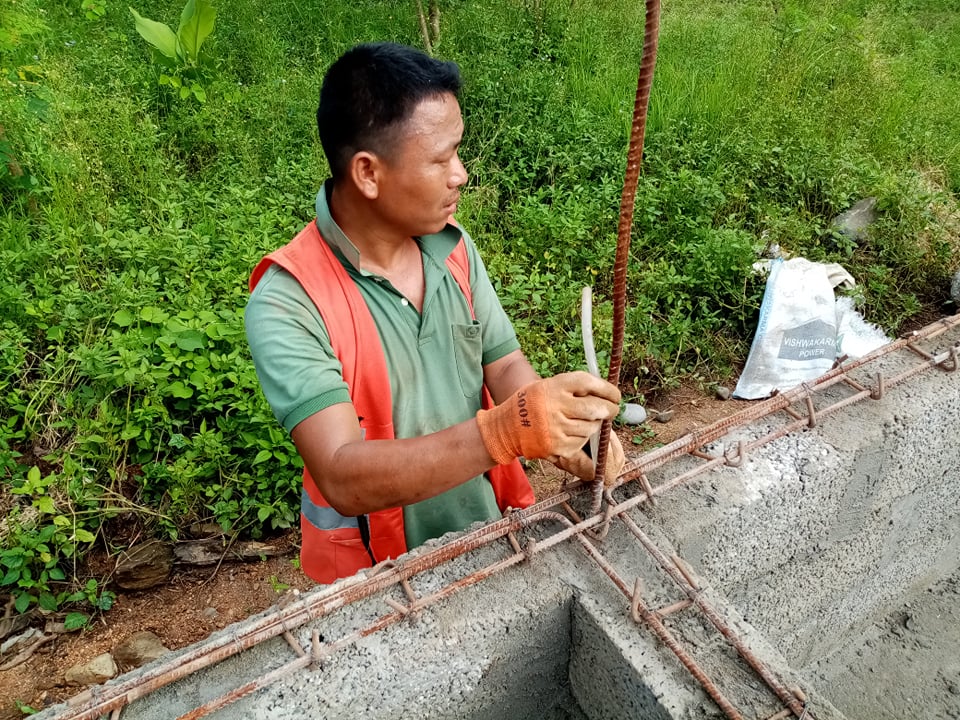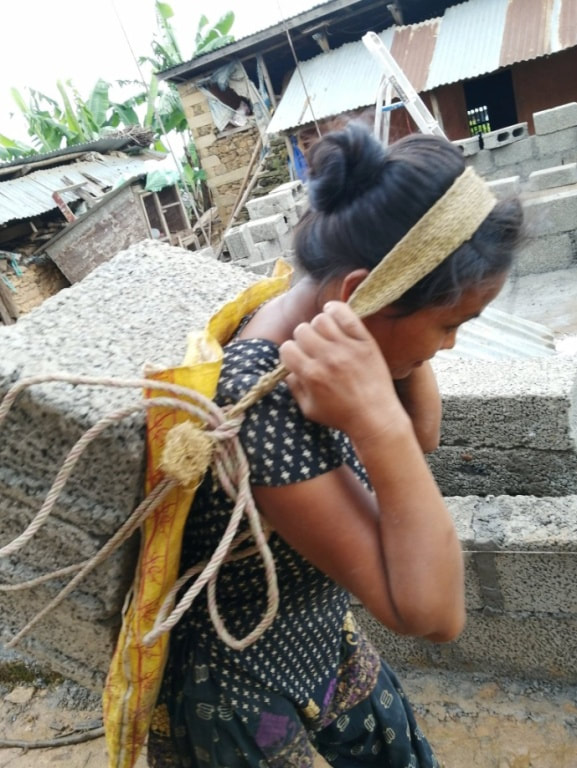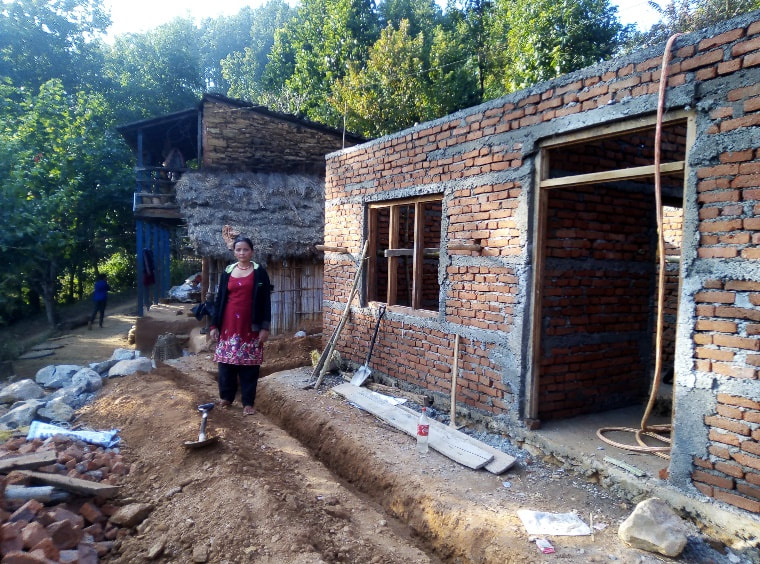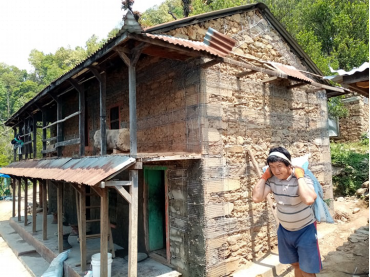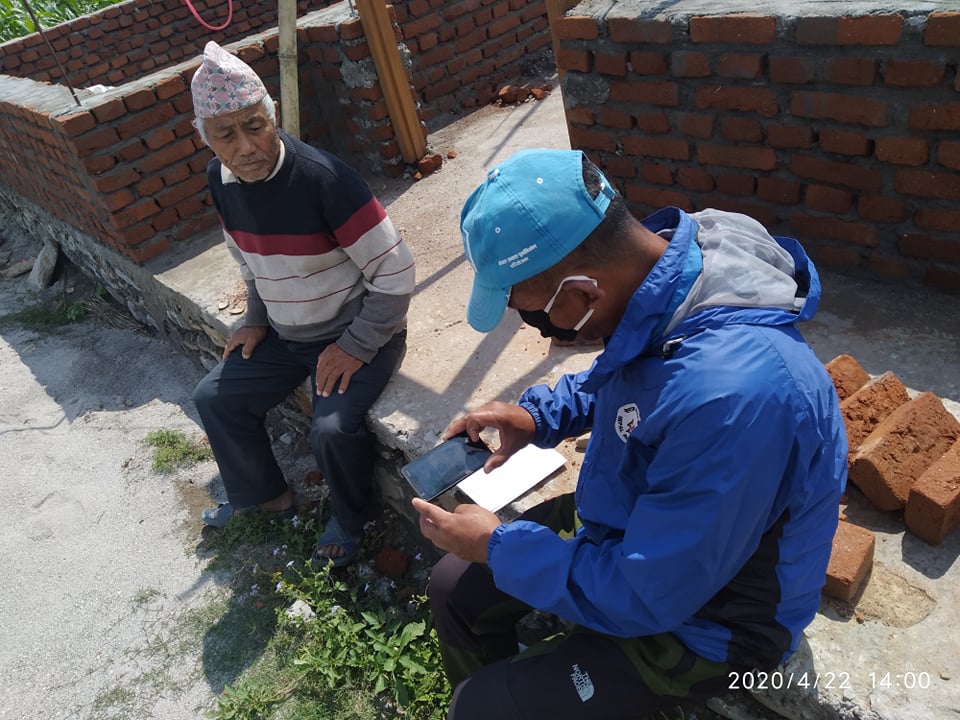OWNER DRIVEN RECONSTRUCTION COLLABORATIVE (ODRC), NEPAL
|
After the Gorkha Earthquake
|
The 2015 Earthquake in Nepal caused massive destruction to 700,000 houses, damaging another 250,000 houses, and devastating lives, livelihoods, basic services and infrastructure across 31 districts, of which 14 were declared as "severely affected". GoN’s strategy for housing reconstruction is based on recognition that rural housing in Nepal is largely an owner-led self-build process, hence Owner Driven Reconstruction (ODR) approach has been undertaken to best respond to the need of the situation and context. The ODR approach places a great emphasis on social mobilization, effective communication, special considerations for social inclusion, and grievance redressal to ensure that the households from all socio-economic strata are able to undertake reconstruction in a reasonable time-frame.
|
|
Retrofitting workshop at ward level
|
The Government of India (GOI) has offered the largest assistance to GON focusing on housing, education, health and cultural heritage. Reconstruction of 50,000 houses is being supported through GOI funding in two districts of Gorkha (26,912 houses) and Nuwakot (23,098 houses).
GoI recognizes the need to facilitate the housing reconstruction process and enable the owners to undertake reconstruction in an appropriate and timely manner. In this regard, the Embassy of India (EOI) has sought UNDP engagement in providing socio-technical facilitation to house owners constructing their houses in Gorkha through GoI assistance of US$ 3000 each in three instalments as per the GoN/NRA policy. |
|
To effectively deliver socio-technical facilitation services, UNDP partnered with the Owner Driven Reconstruction Collaborative (ODRC), a network of registered institutions in India working in instituting and facilitating ODR. The ODR Collaborative (ODRC) is a network of known resource persons with experience of post disaster reconstruction. With the mandate to support initiatives of Owner Driven Reconstruction, ODRC specializes in establishing mechanisms to provide necessary socio-technical support for reconstruction to communities affected by natural hazards and conflict. It believes that effective long-term recovery after a disaster can accelerate empowerment and achieve developmental goals by harnessing the latent talent and energy of the people.
|
Four participating organisations have been mobilised by the ODRC resource group to collaborate with UNDP for facilitating Government of India funded housing reconstruction in Nepal:
i) Hunnarshala Foundation as a technical partner ii) UNNATI – Organisation for Development Education, as a social partner iii) SEEDS Technical Services as a managerial partner iv) Centre for Ecocentric Development and Peoples’ Action (CEDAP), assigned as a quality monitoring. |
|
Training of Awas Nirman Saathi - practical session on Brick work
Mobile Van Demo in Gorkha Municipality 3, Nareswor, Dumsuri
Onsite technical facilitation_Engineer
|
The components of the project to that provided socio-technical facilitation
to house owners in Gorkha district are as follows: 1. Facilitating administrative procedures regarding inclusion, grant release and certification: The house owners were supported on administrative procedures, and in complying with the government norms and objectives to mitigate disaster risks. 2. On-site technical advice and guidance to house owners: Onsite technical advice on construction technology, design options, disaster resistant features, government norms, material procurement and construction management was provided to the house owners through trained masons to ensure quality construction and improving performance of the buildings in disasters. The technical advice was built upon local knowledge, wisdom, skills and practices of construction, and improved them further by combining modern scientific understanding in a way that solutions are affordable, environment friendly and people-centred. 3. Technical services of design drawings, preparation for building permit process: Facilitation support was provided to the owners in the two municipalities- Gorkha and Palungtar (with 14,701 beneficiary households) to prepare designs/drawings of their houses for submission and approval from municipality. 4. Capacity building of all project participants, particularly house owners and masons: Capacity of the project teams was enhanced through IEC, awareness and skill training activities at all levels providing them with technical, social orientation and programmatic and management skills to ensure that they could provide high quality socio-technical facilitation to house owners. 5. Concurrent monitoring and quality assurance: Concurrent monitoring and quality assurance audits were part of periodic monitoring for reconstruction work, thereby helping the project team to take timely remedial actions on quality and safety as per GON’s technical guidelines. |
|
Construction Labourer to Skilled Mason - the Story of Dorje Gurung
Dorje Gurung (37) is an inhabitant of Ward No. 1, Gandaki Rural Municipality of Gorkha district. He belongs to a 5 member family and his family possesses merely two Ropany of land which is insufficient to feed their family. . Dorje had to stop his schooling at grade 8 due to the poor financial condition of his parents. He was forced to go India to work as a seasonal labourer to earn money for his family’s livelihood for three years, and returned to his homeland when he was 20 years old.
Dorje became a construction worker with his neighbours when he returned from India to feed his family. After the 2015 Gorkha Earthquake, working opportunities increased, but his status of being a labourer did not change. “When I received low payments, I felt that I was being dominated. I worked more than a skilled mason and I was determined to become skilled mason one day”, he expressed. When NHRP started its intervention at Gandaki Rural Municipality of Gorkha District, and provided on-the-job short term mason training in different construction technology, Dorje was one of the beneficiaries who received on-site mason trainings on different typologies and construction stages. This opportunity also supported him to enhance his knowledge on earthquake safe housing reconstruction techniques. He was continuously involved in the housing construction sector and was able to contribute to reconstruct more than 15 houses. With this, people gradually started to trust his construction and have started pre-booking him for reconstruction jobs. “My struggle of becoming professional mason was very difficult but I became successful. Now neighbours trust me in my work and ask me questions related to construction. In this moment I am really happy. I want to continue my work as a mason, and I am proud of my work”, he expresses. |
Overcoming Barriers to housing reconstruction - THE
Story of Krishna Maya Thapa (Magar) Krishna Maya Thapa, resident of Sahidlakhan Rural Municipality Ward no 5, Taklung, is a single woman living with an 8 years old son. She lost her husband suddenly, two years before the earthquake, and their home in the earthquakes of 2015. She and her son lived for a long time in a temporary shelter. She was enrolled as a beneficiary in the government’s housing Reconstruction Program as Government of India (GOI) supported beneficiaries. However, due to little guidance on administrative procedures, she was not able to initiate reconstruction and she remained stuck in the same condition for more than four years. She was not even able to withdraw her first tranche due to a mismatch of supporting documents.
When she received her second tranche, she was forced to repay an outstanding loan she had taken earlier for her husband’s treatment due to the persistence of the money lender. She discontinued construction work due to lack of money and it stayed that way for a long time. Krishna Maya Thapa (Magar) regularly visited the ward palika and NHRP’s cluster office to get suggestions and solutions to resume her house’s construction. When the NHRP took the approach of onsite mason training, her house was one of the selected and recommended houses among halted houses. One event of a three day onsite mason training program was organized focusing on finishing the remaining construction of her halted house, mobilizing five local masons as training participants. After the completion of the onsite mason training, her house progressed up to sill level, making her eligible to receive the third tranche. When the Nepal Housing Reconstruction Project lunched socio- technical facilitation support to earthquake affect households in Sahidlakhan, various type of such reconstruction related cases were identified. Among identified issues, her case was noticed and treated directly due to priority of individual’s housing reconstruction. Her reconstruction issue was informed and registered at ward palika and recommendation was made to respective banks with additional supporting documents to release her first tranche. “When I received my first tranche, I was very happy that I received housing grant to build my new house. The community facilitators of NHRP came to my house and advised us that the money will be deposited in bank account. I didn’t have a bank account before. If the money was given to me in cash, I wouldn’t be able to save it. It would be better if the money got deposited in a bank account. That way, I wouldn’t spend for other household items, she expressed.” After receiving her first tranche, she was able to complete her house’s construction with the support of the cluster’s engineers up to DPC level. Technical inspection was facilitated and her file was forwarded for the second tranche.
During training program to till remaining construction work of house construction, she was also actively involved as unskilled labor aiming to some contribution on construction work of her house. When NRA engineer forwarded her file for third tranche she said; “I was hopeless to reconstruct my house but now I am hope ful that I will get my new house very soon after living long under a temporary roof after earthquake. After receiving my remaining housing grant I will complete the construction work of my house and I will stay there safely with my child.” |
|
Landless Dalit Women’s safer house dream fulfilled - the story of Indira Nepali
My name is Indira Nepali and I am 25 years old. Now I am living in the Palungtar Municipality Ward No 7 with my two small kids. My husband works abroad as a labourer and earns small amount of money to feed my family. We have been living in public land provided by local community and we don’t have land ownership.
After the Gorkha Earthquake struck, I visited the ward Palika and found that my name was listed as a beneficiary. One of he staff of the ward palika suggested to me to start house reconstruction as soon as possible. But I did not have any idea how a landless beneficiary could reconstruct a house. I was completely unaware about the reconstruction process. I attend tole level community meeting at nearby community organized by Nepal Housing Reconstruction Project. During discussion all community people shared their progress of reconstruction and I also shared my problem of being landless. The Nepal housing reconstruction project staff visited and communicated with me for documentation. After waiting more than 9 months, I was listed under eligible landless households and applied for the agreement to start the process for using public land to reconstruct my house. On the ward chairperson’s suggestion, and I consulted with an engineer before starting to construct my house. The field team of Nepal housing reconstruction project guided me on all administrative procedures and technical features of house, and material quality, and I was able to reconstruct my house up to roof level. I had felt hopeless before the PA agreement about undertaking so much without having my husband around but I now feel proud to have a new safe house because of my involvement. Earlier, I was apprehensive to talk to masons and suppliers, but now I have more confidence to monitor the mason and manage all these things properly. |
How retrofitting restored life - the story of Hom Bahadur Thapa
Hom Bahadur Thapa resident of Gandaki Rural Municipality ward no 2, Tanglichok spent five monsoons and four winters under a temporary shelter with his family since the earthquake of 2015. Hishouse build from stone masonry with mud mortar was still standing, but with multiple cracks was very unsafe to reside in. All of his neighbours were listed as reconstruction beneficiaries, but not him. He waited a long time expecting that he would be listed, but unfortunately wasn’t. He requested his ward chairperson to enlist him as a reconstruction beneficiary, but because his house was only partially damaged, he could not be considered a reconstruction beneficiary as per NRA guidelines. The NHRP technical team then visited his house, and estimating the vulnerability of the house, decided and advised to retrofit the house. After the proper consultation Hom Bahadur also agreed to go for retrofitting. The ward office and the elected representatives also unanimously agreed with the recommendation. The very next day in presence of ward chair Mr. Deu Bahadur Gurung, an MoU was signed between Hom Bahadur and NHRP to conduct a 4 days on-site retrofitting training with local masons. The NHRP team began the retrofitting of his house in last week of May 2020 as a part of on-site mason training. Mr. Thapa was also involved in the retrofitting process,s supporting the NHRP team and 12 local masons participating as a trainee masons. Mr. Thapa cooperated with NHRP team as per the MoU and was able to complete the retrofitting of his house. During the training ward chair and elected members also visited the house to study the retrofitting technology. “We were unaware that we could repair our old house without breaking it. Engineers of the NHRP team observed our house from the beginning till the completion and helped us make the house earthquake resilient. This was more effective and economical than building a new house”, said Mr. Thapa. |
Relentless support by Awas Nirman Sathi (ANS) facilitating earthquake reconstruction during Lockdown
Due to the outbreak of Corona virus creating a global health crisis, the Government of Nepal had announced a nationwide lockdown to stop community spread of the virus. Due to the threat, in most of the development activities including reconstruction of private houses came to a standstill. Though Nepal Housing Reconstruction Project (NHRP) was also affected, the team’s innovative remote support and continuously facilitated the under construction projects using social network applications and keeping physical distances.
50 year old Dhan Bahadur, a resident of Palungtar Urban Municipality, is deployed in his own ward (number 5), as a staff of NHRP and has been engaged in guiding the house owners and local masons on construction of houses. He continued his field movement to provide technical support to the house owners on the critical stages of construction even during lockdown by maintaining physical distance and without violating the government directives. Kamal Man Tamang is one such resident of Palungtar whose house construction is continuing with Dhana bahadur regularly guiding the house owner and mason engaged in construction of this house. “Being a local person, it is my responsibility to ensure the house constructed here are earthquake resilient, so I must be available whenever the house owner is in need of me”, said Dhan Bahadur. |
